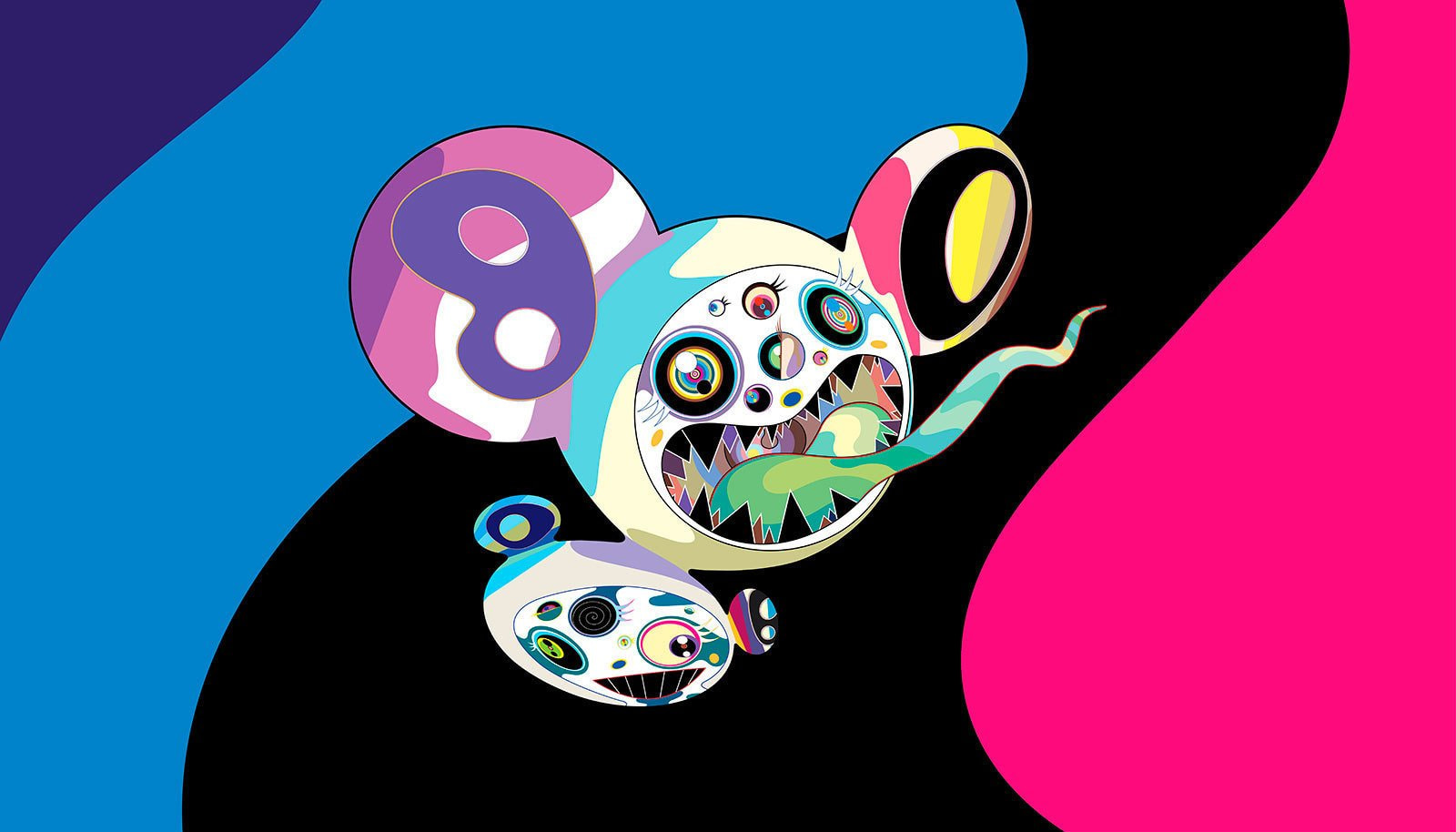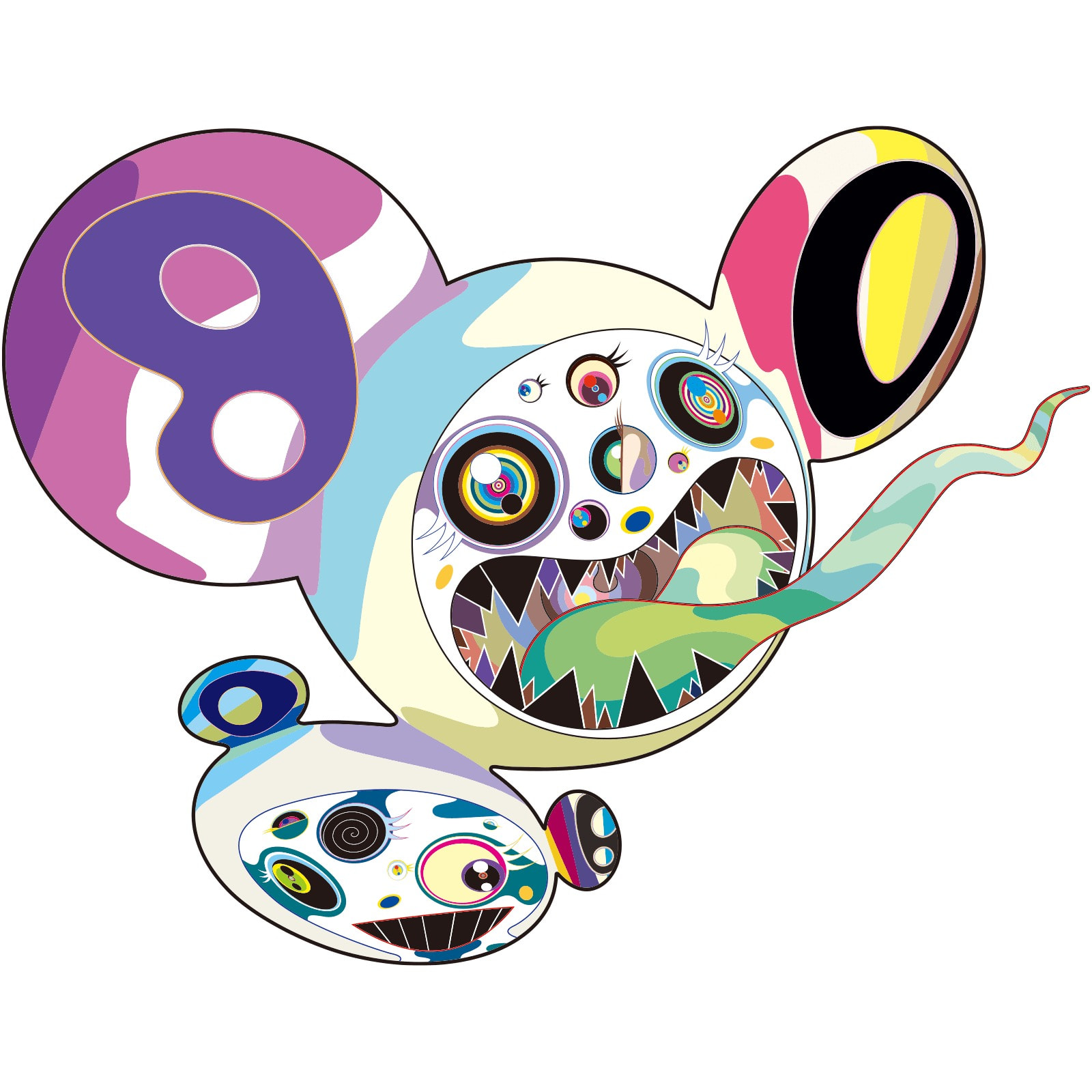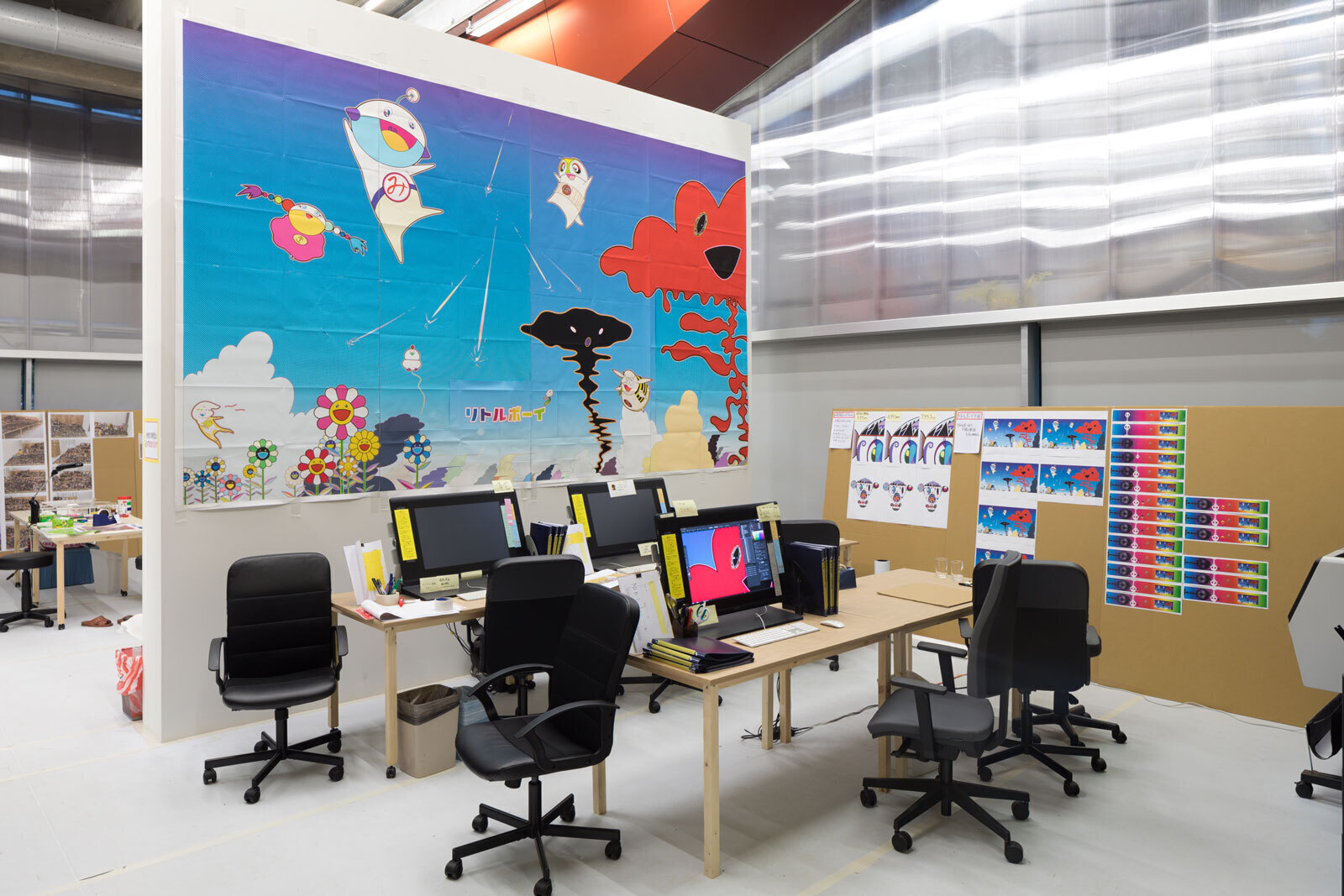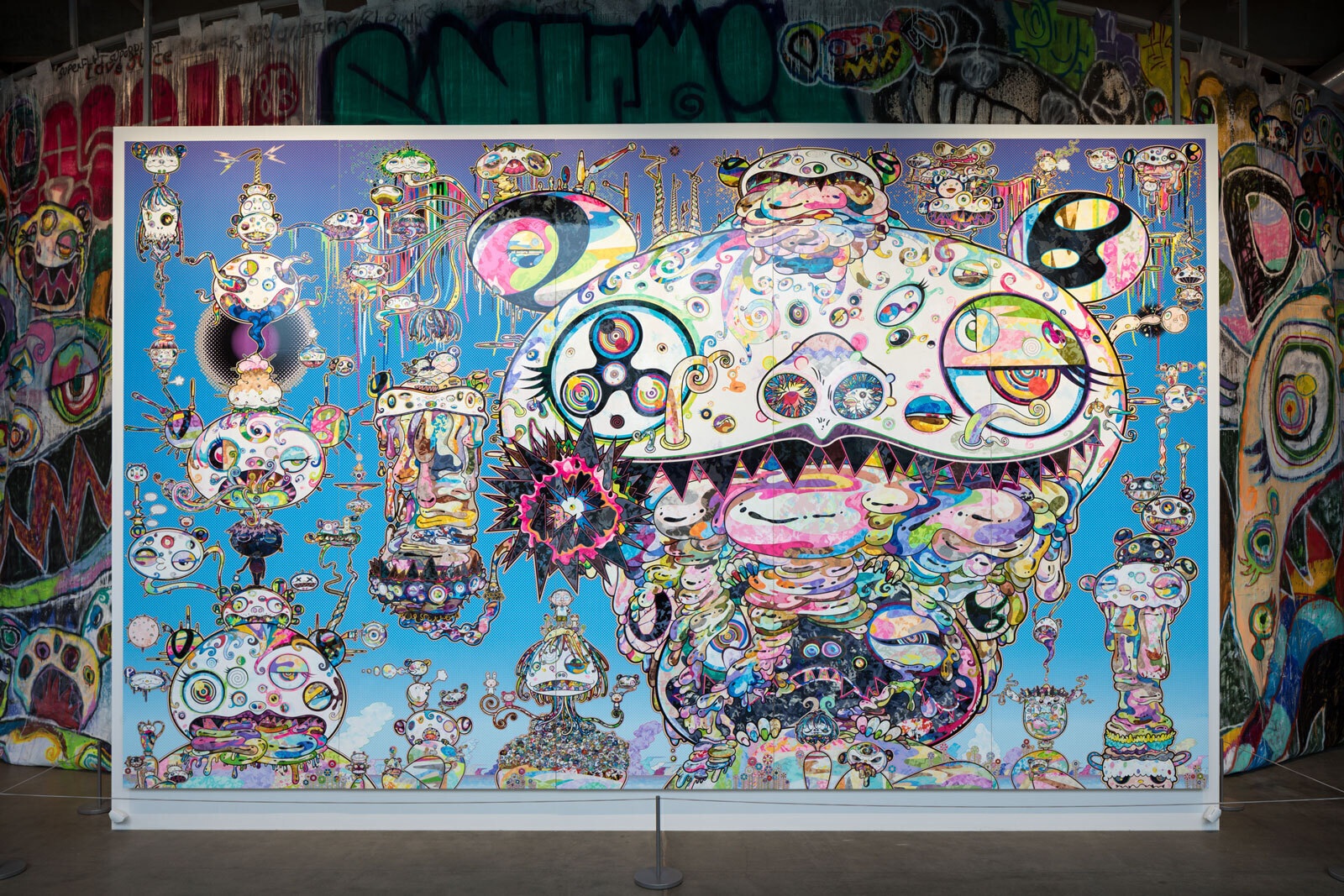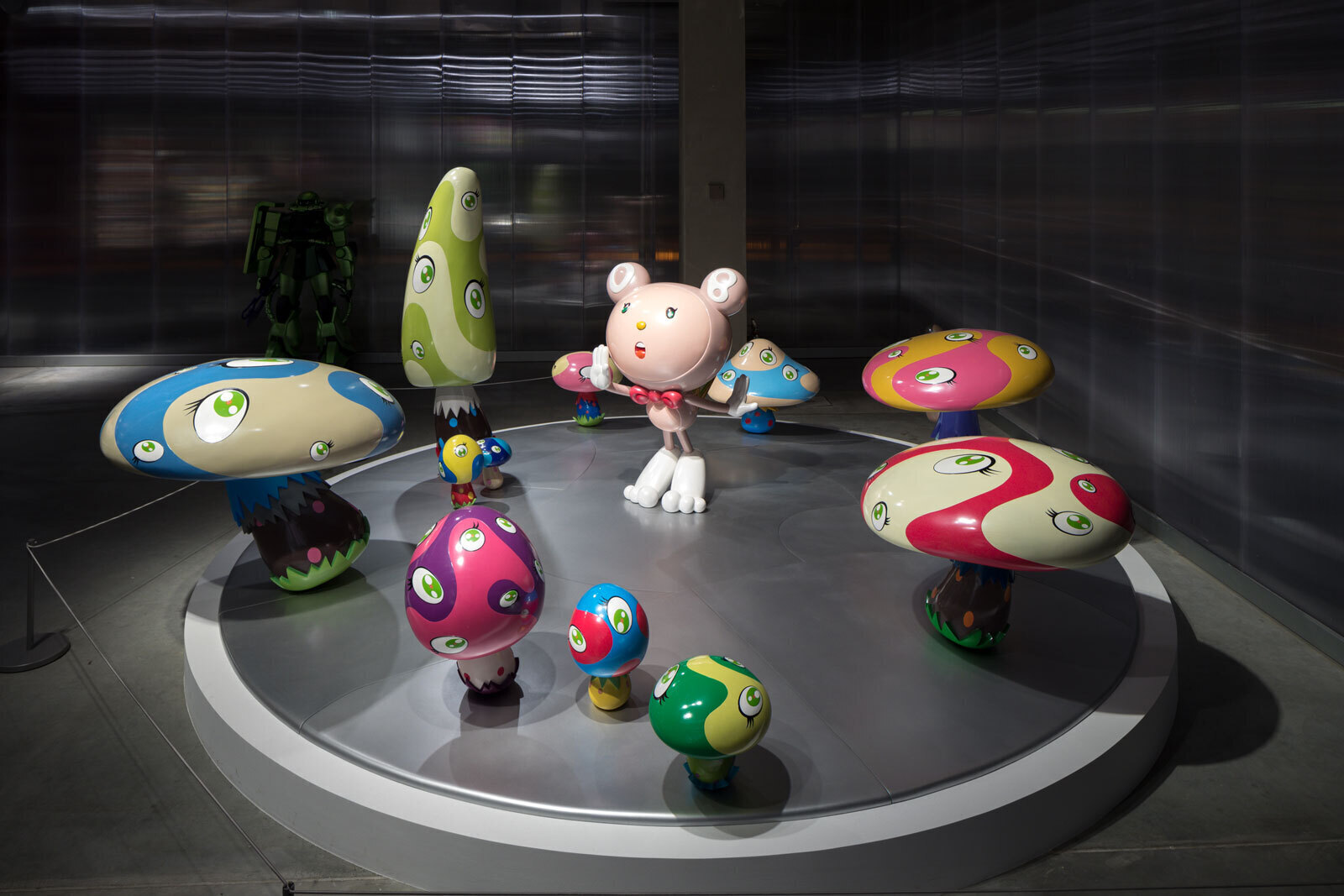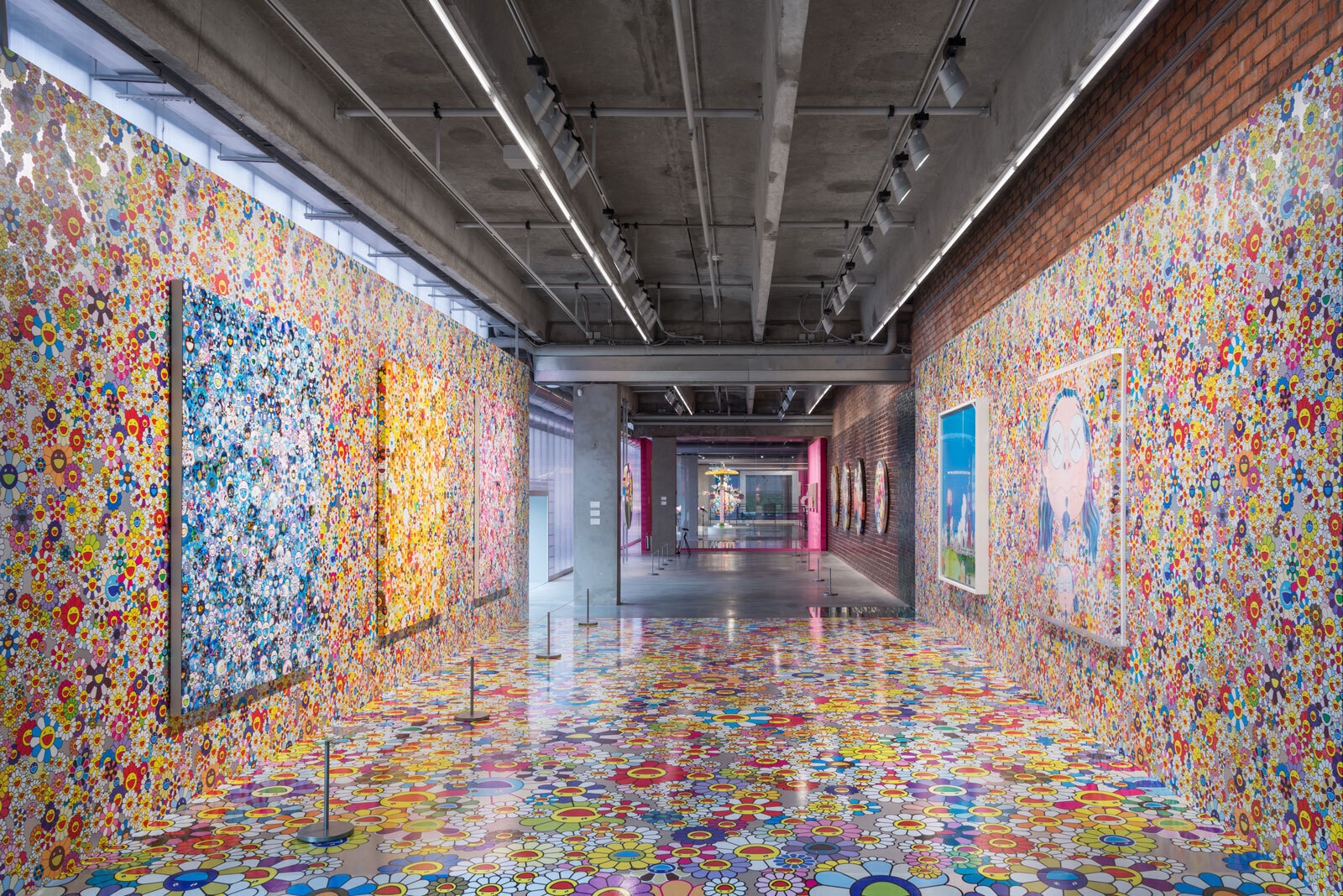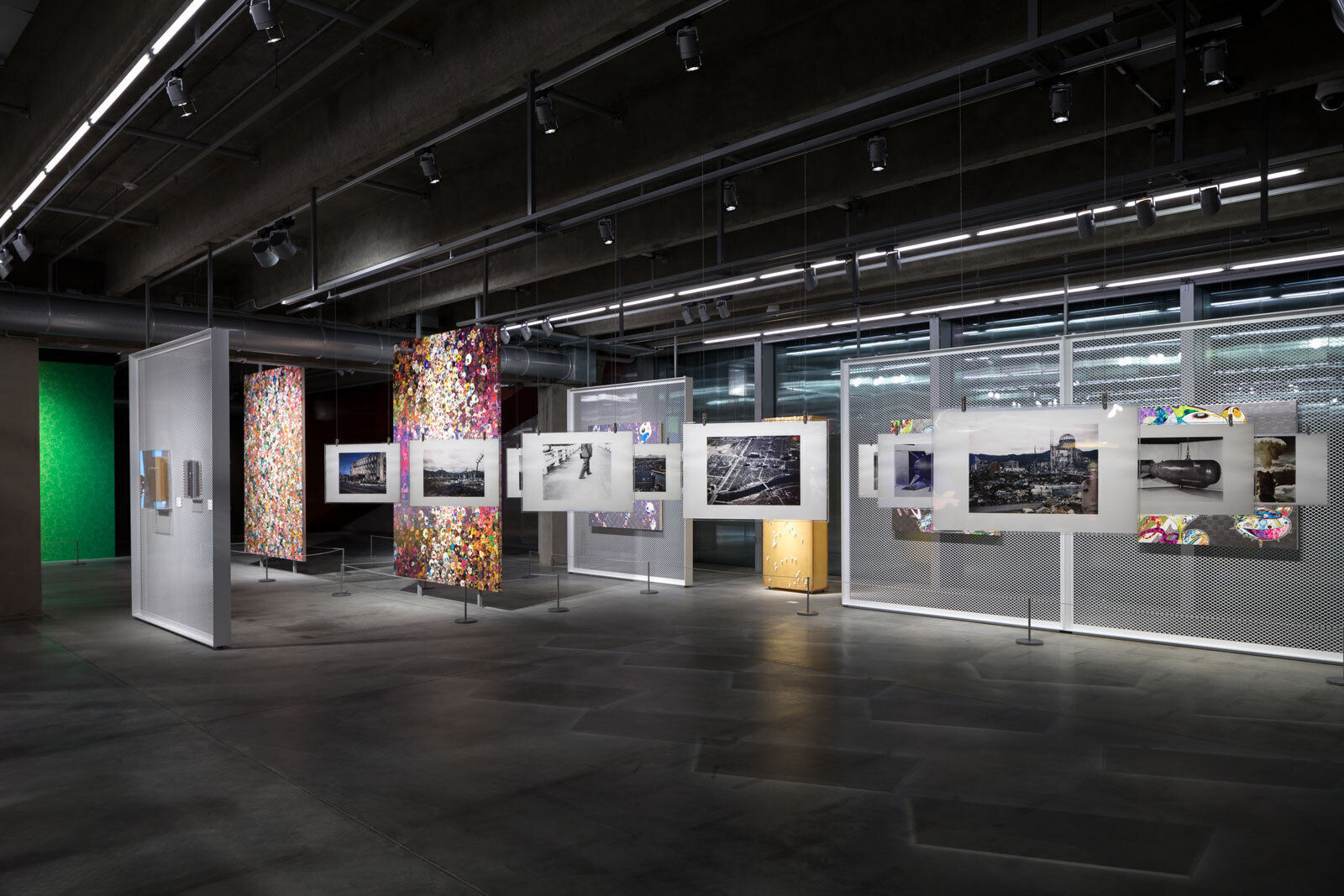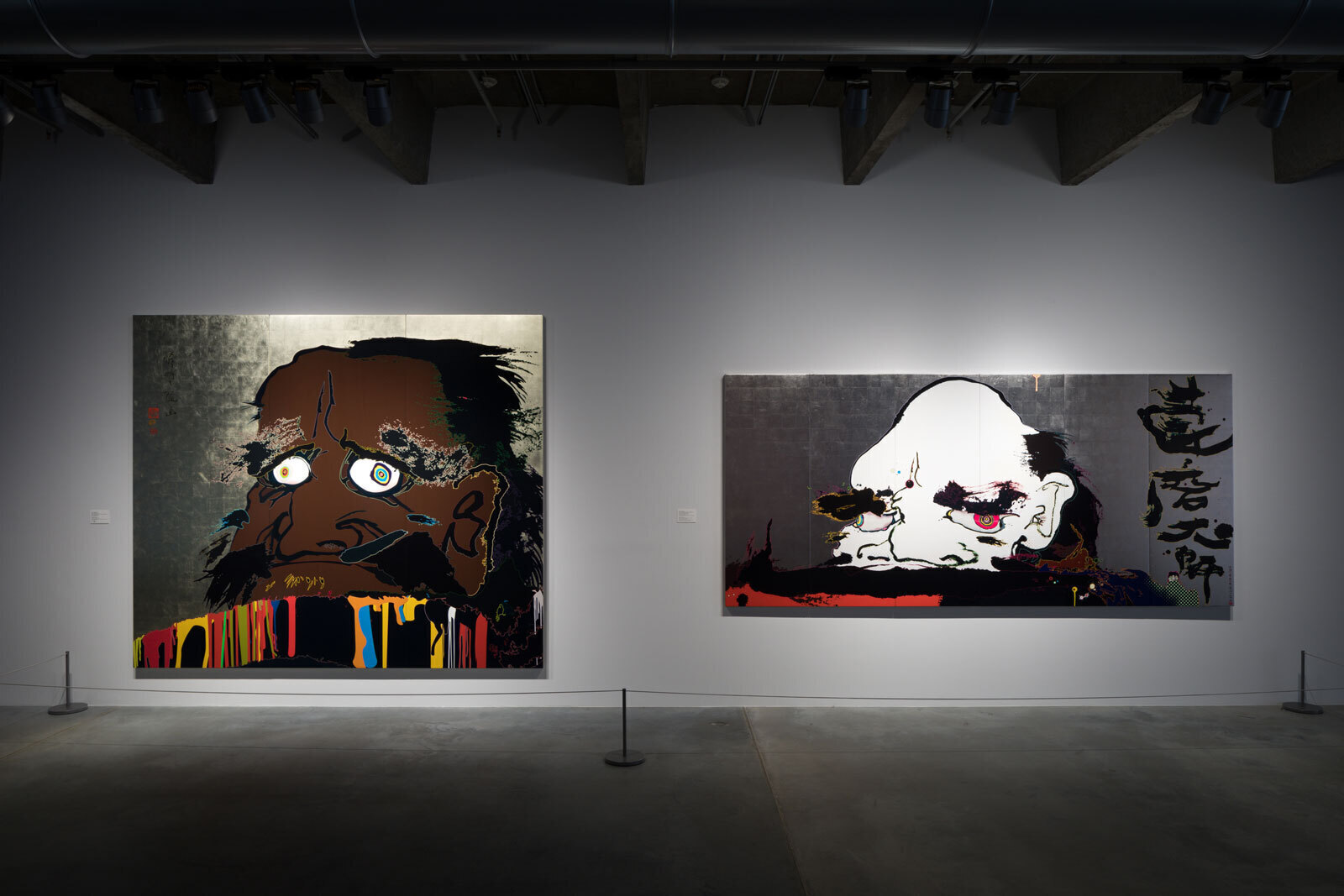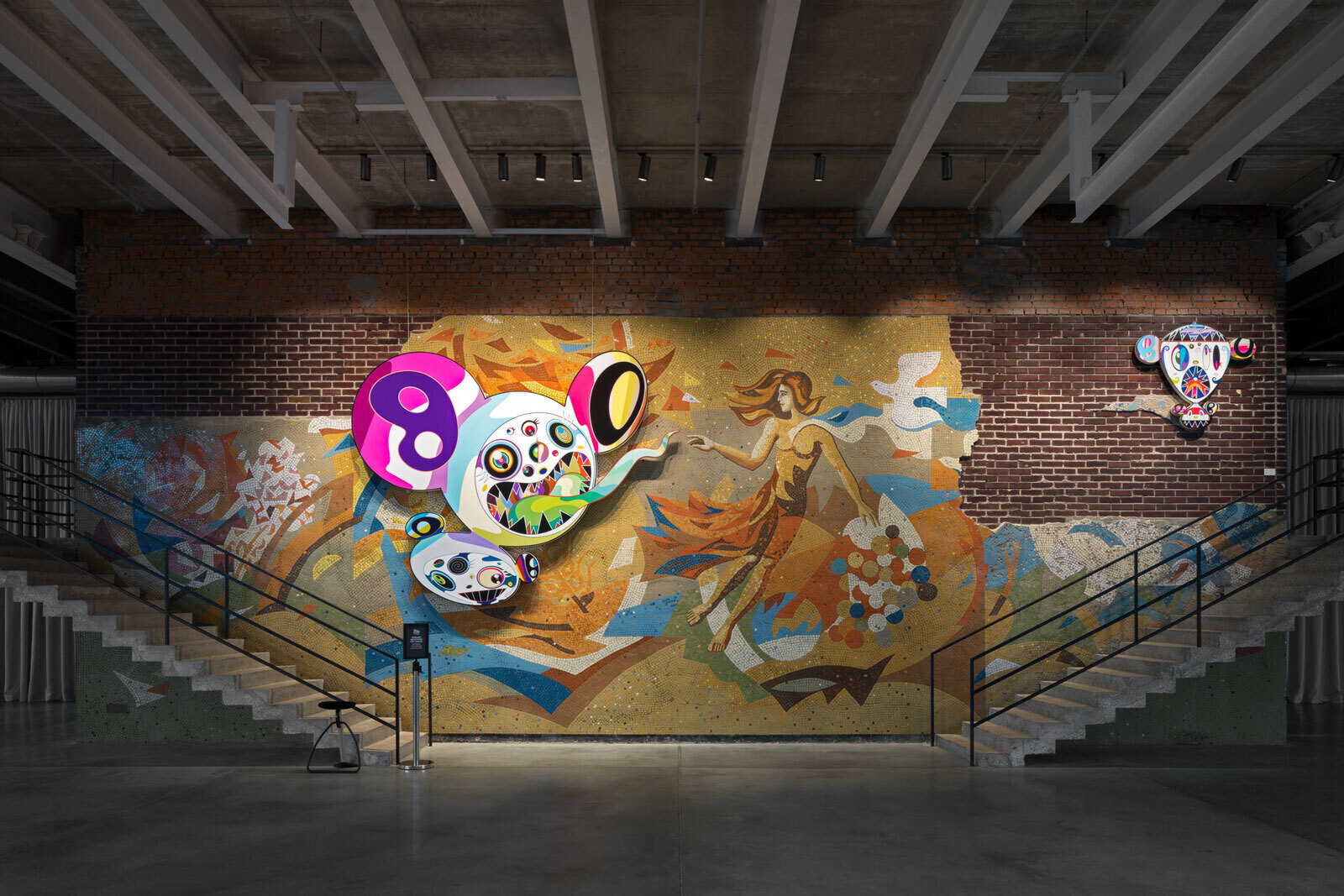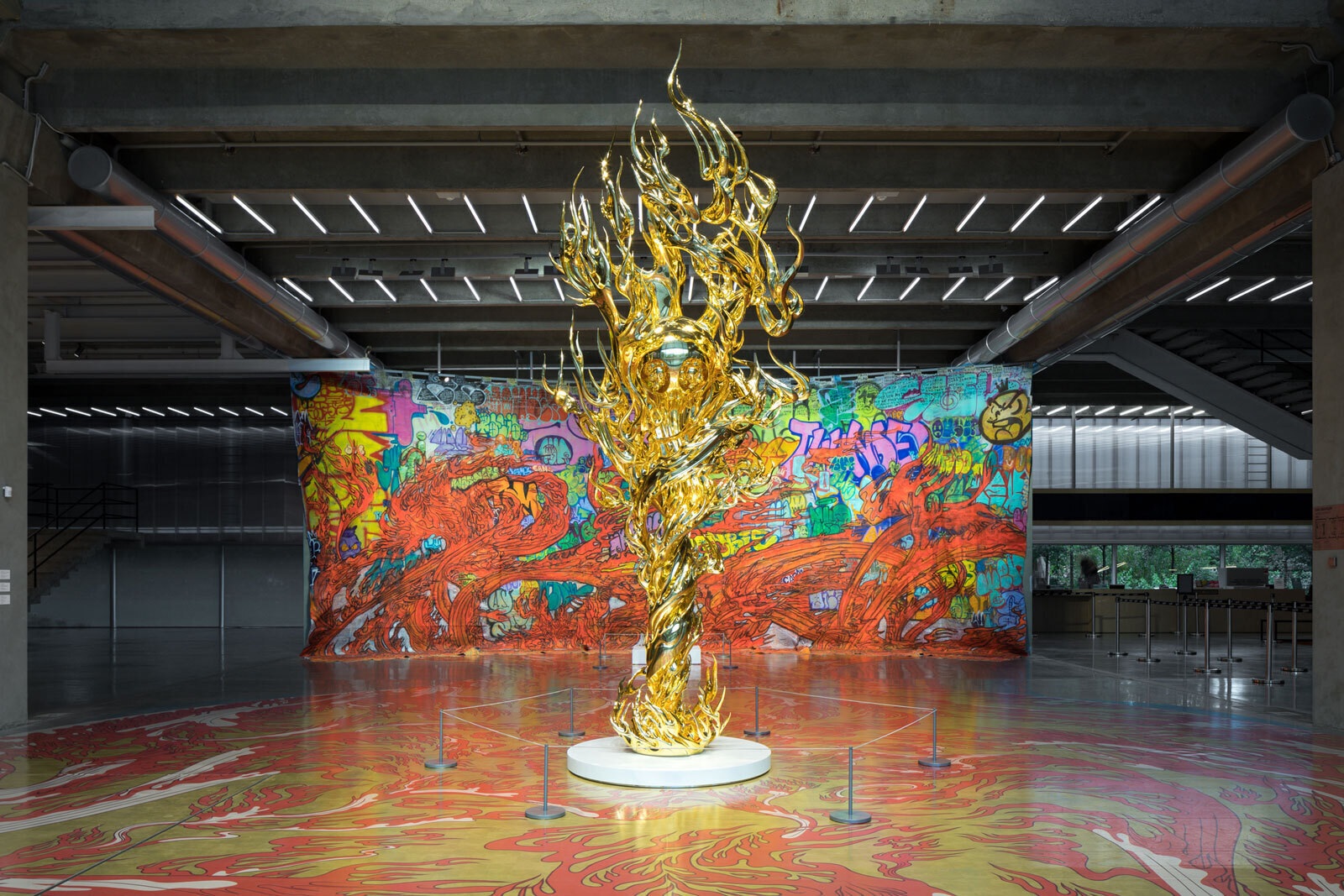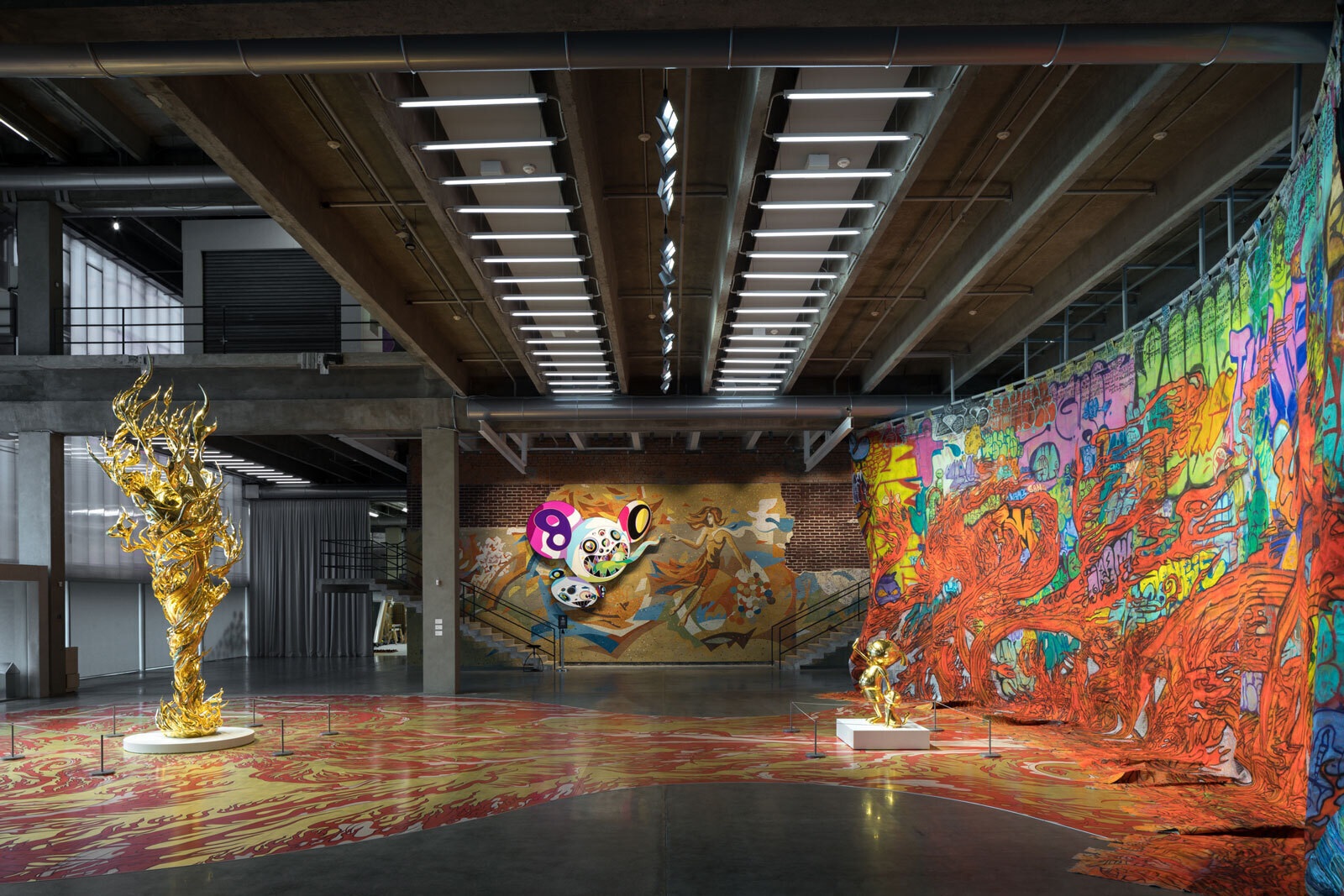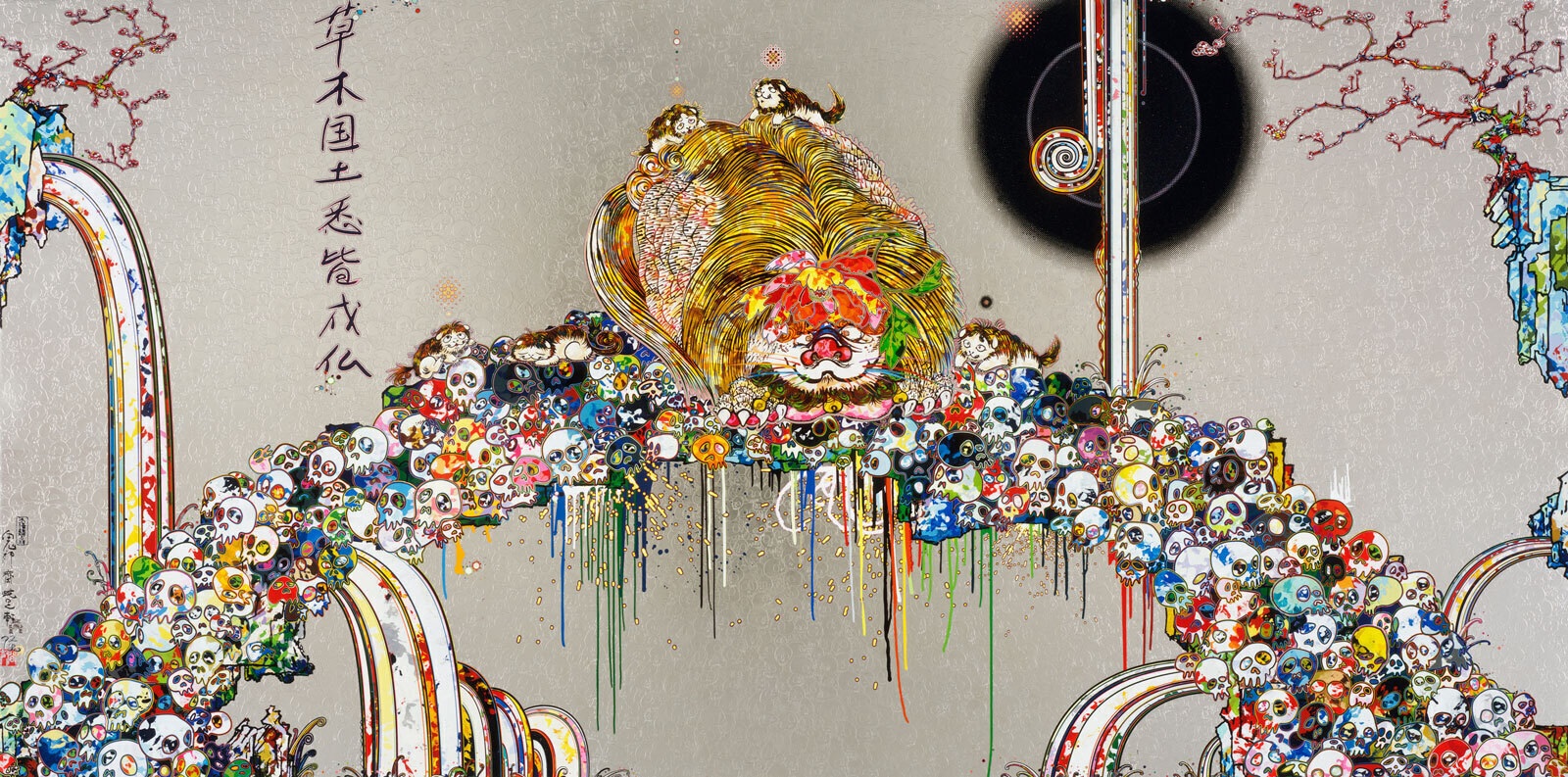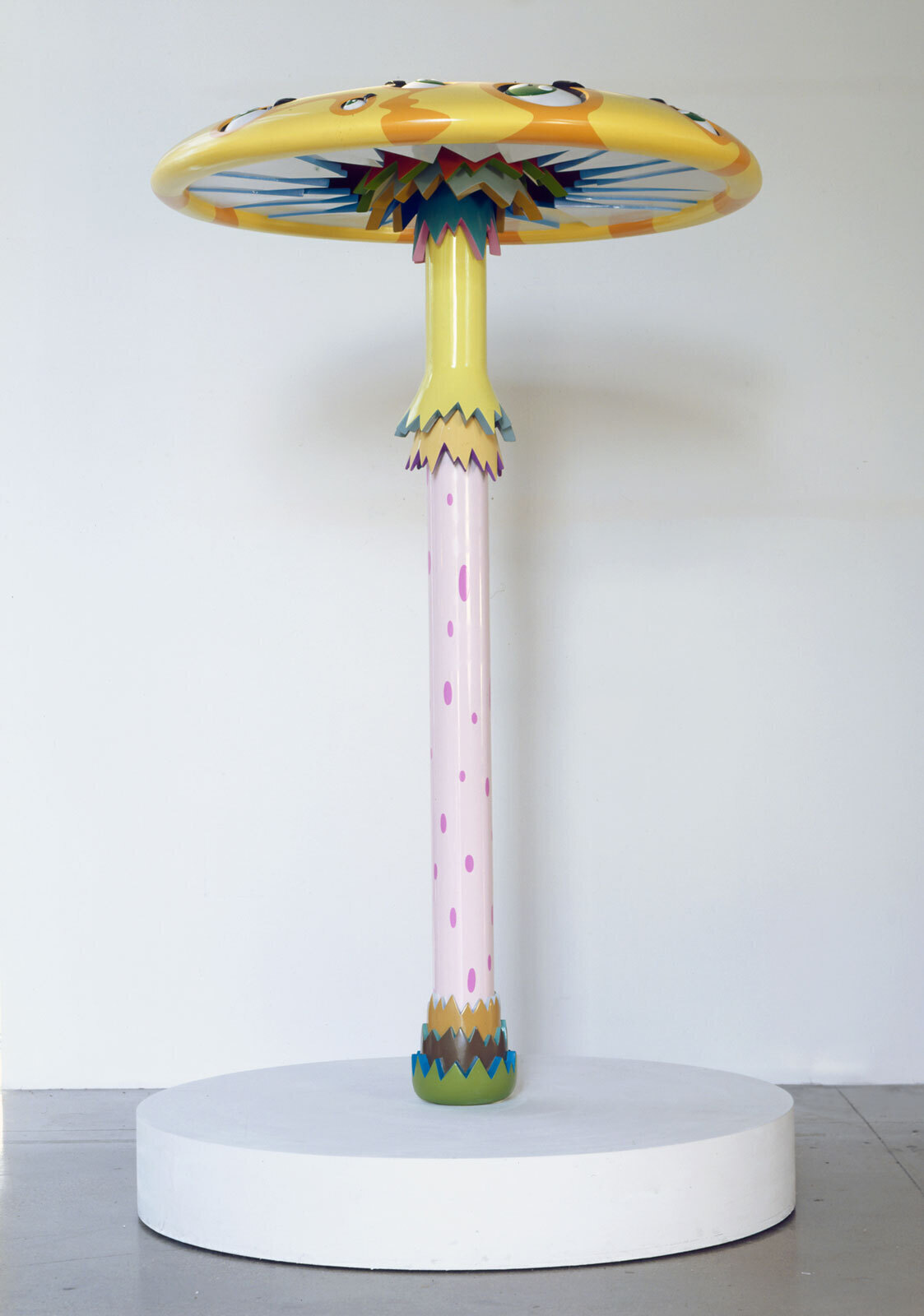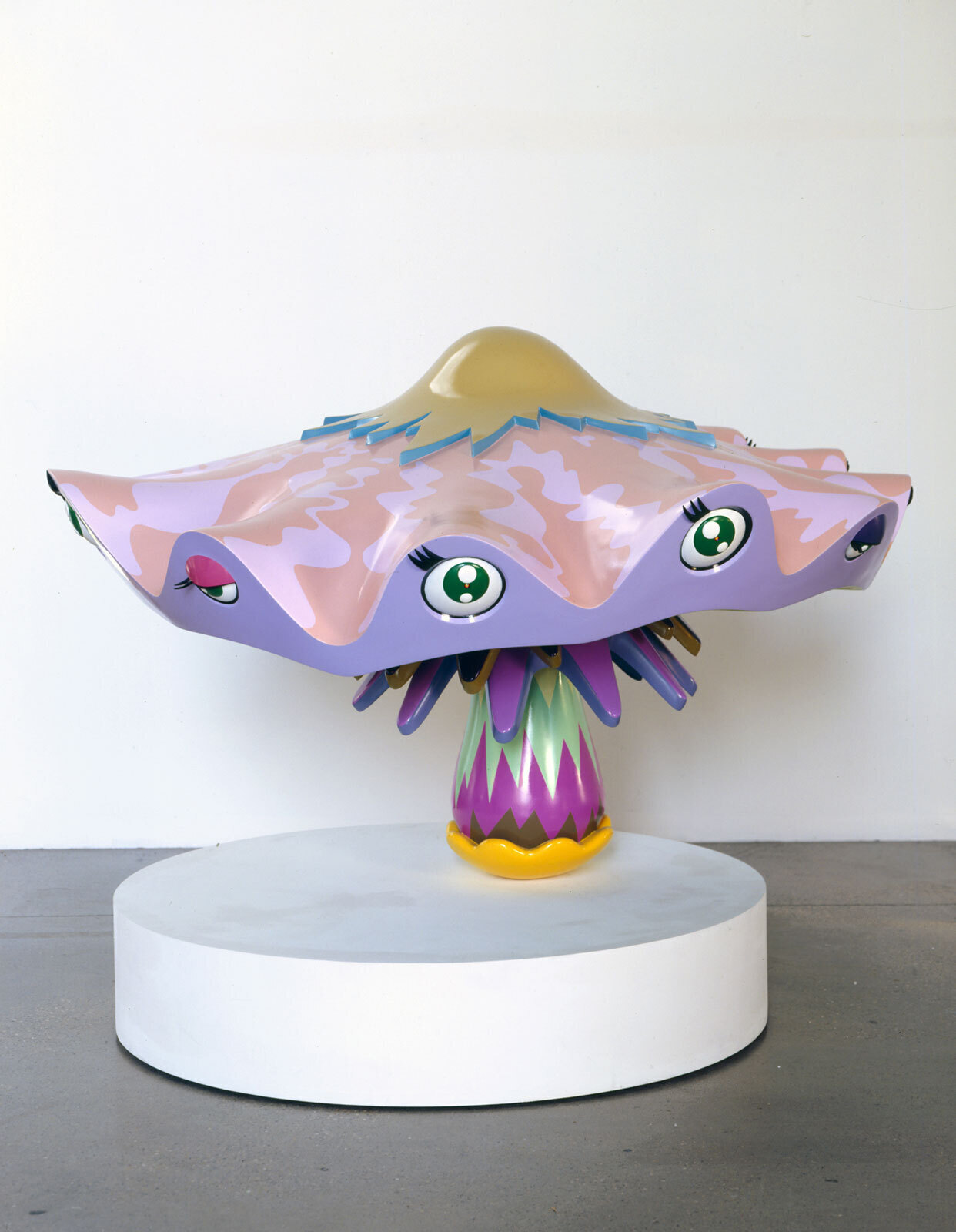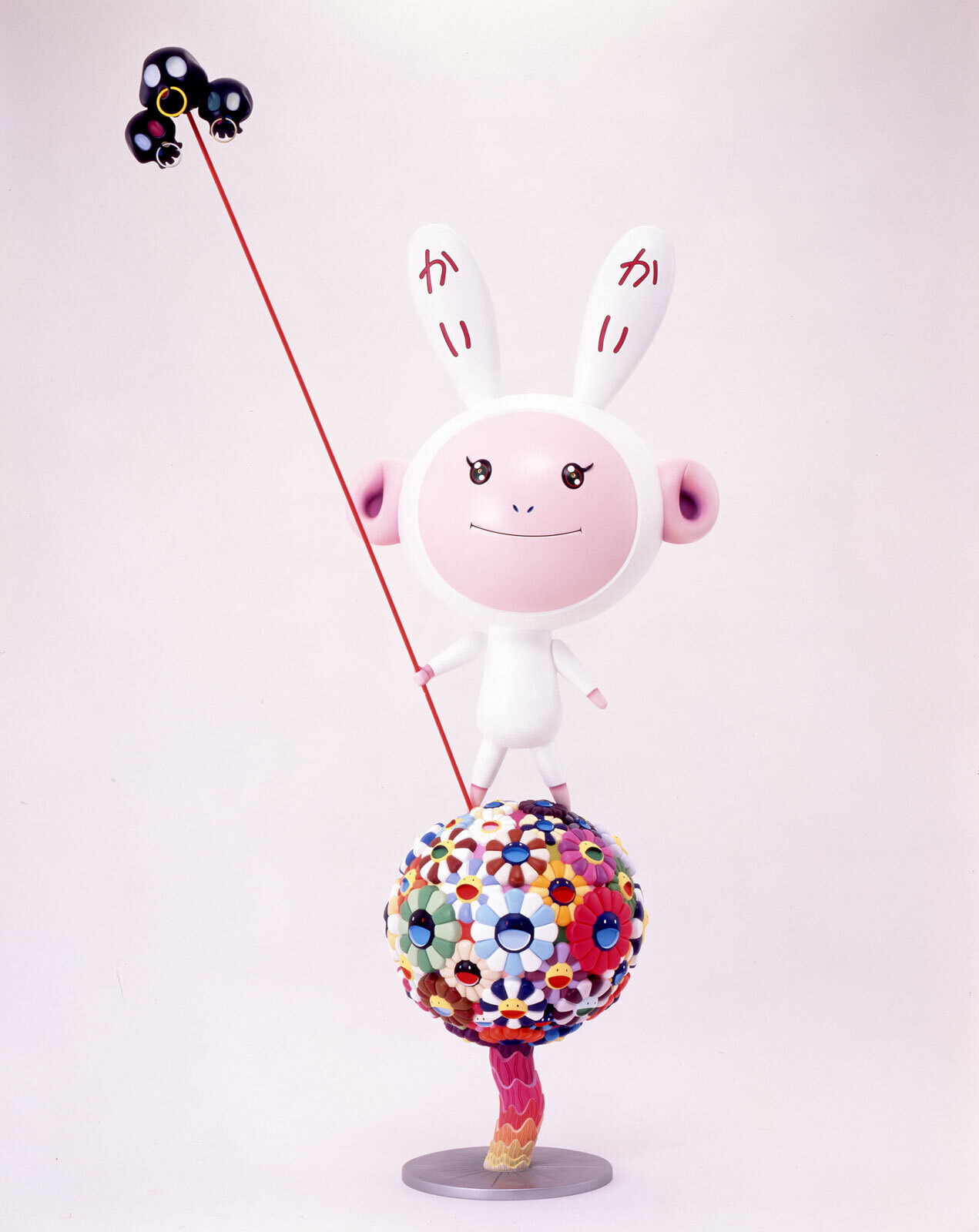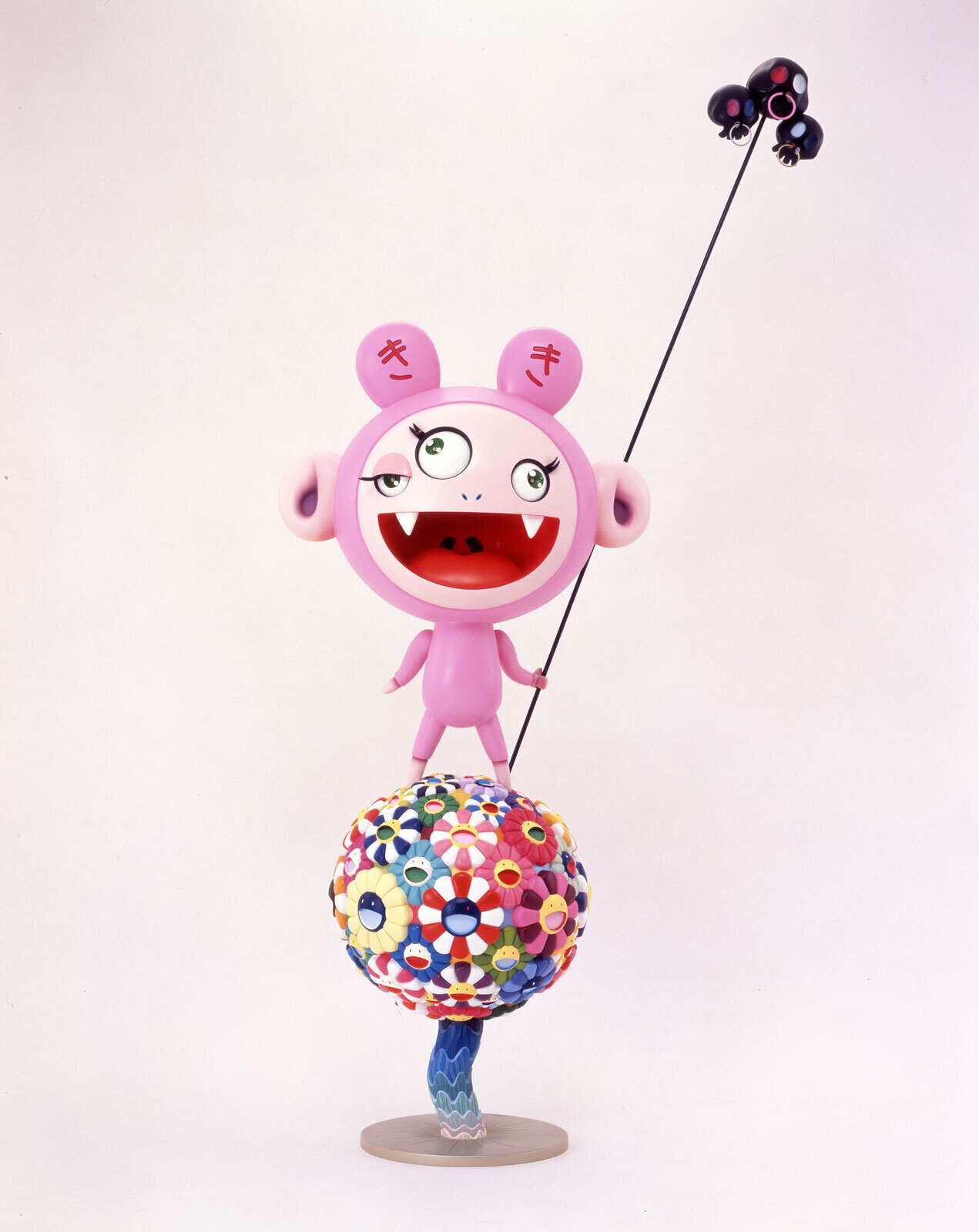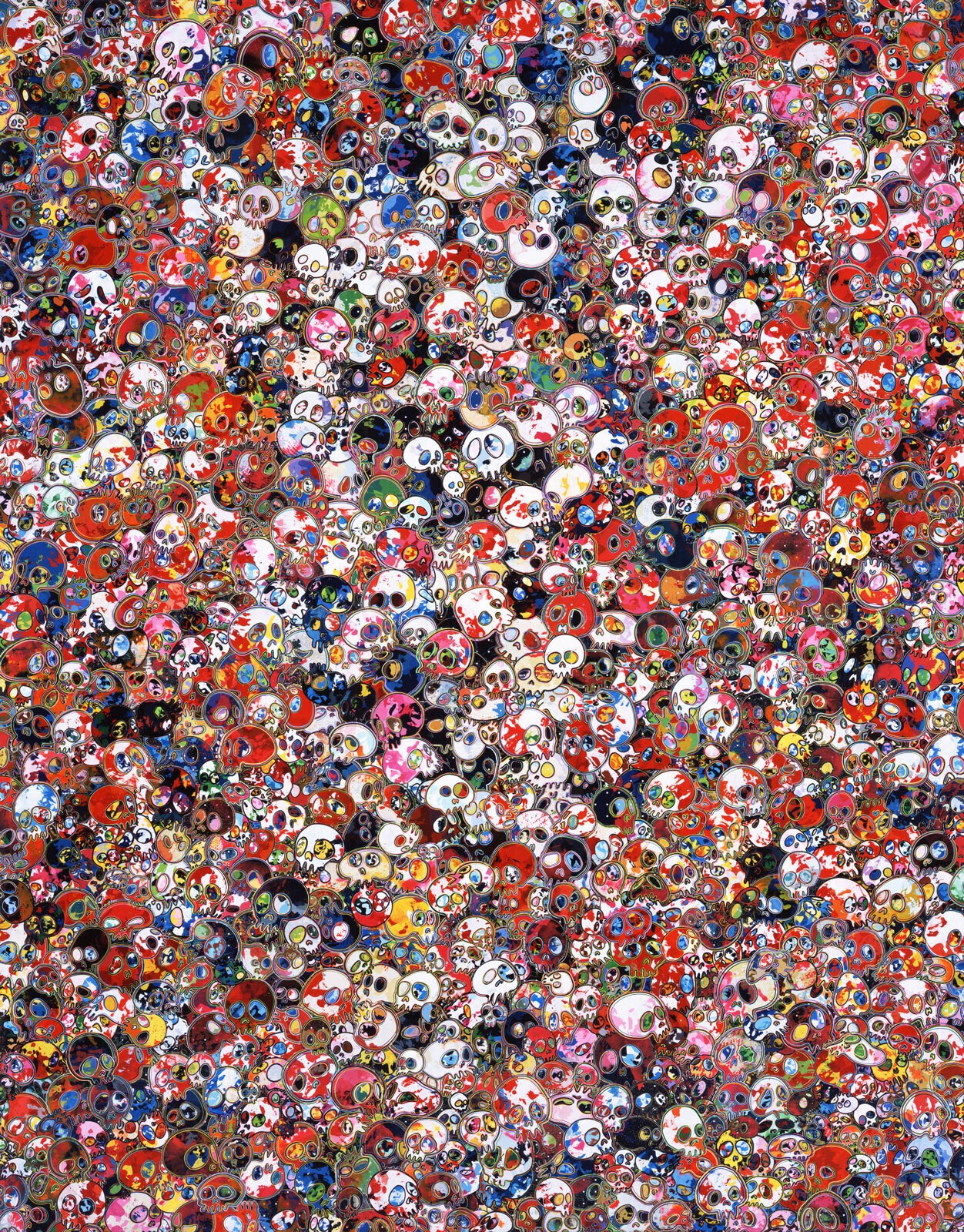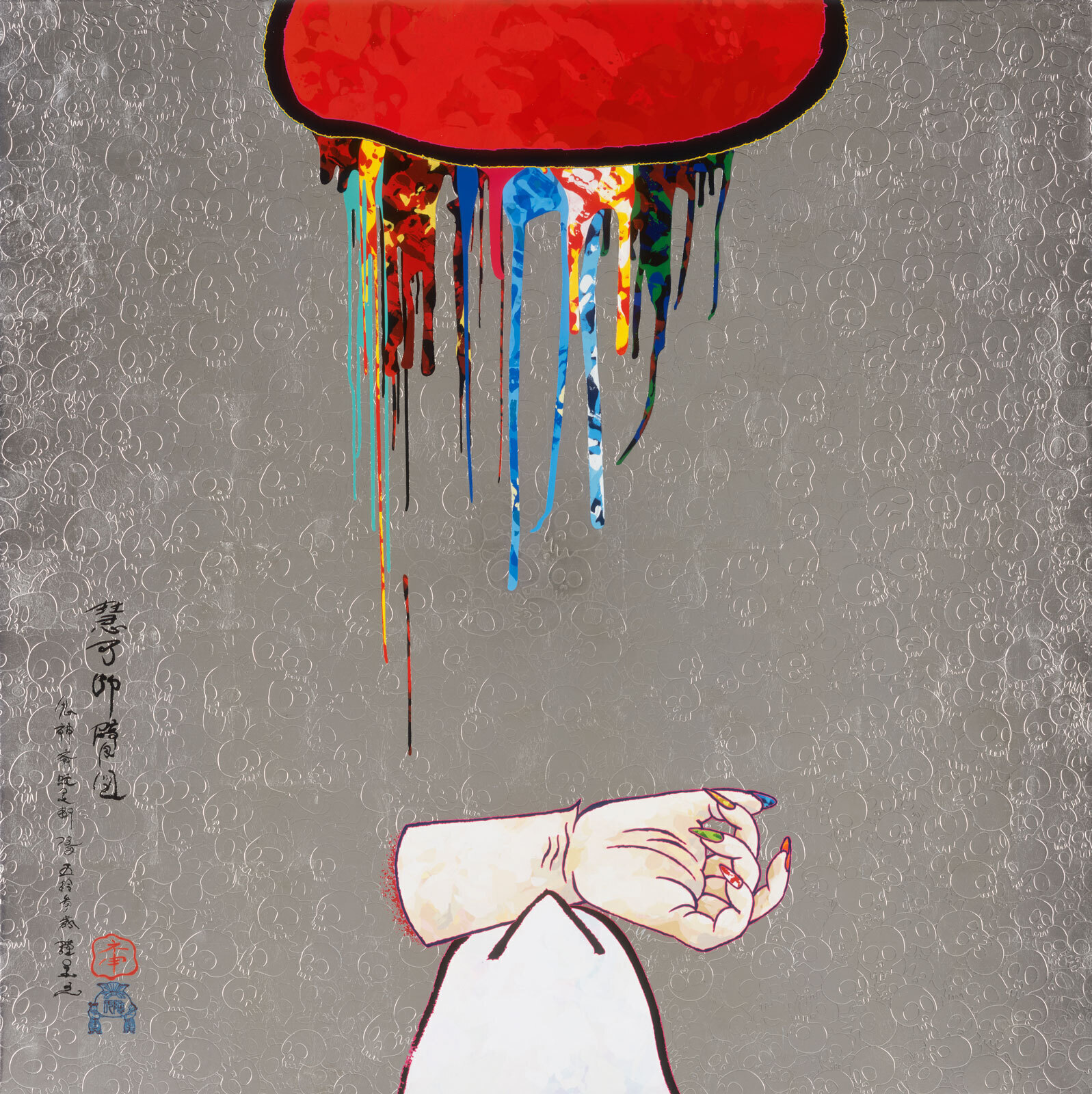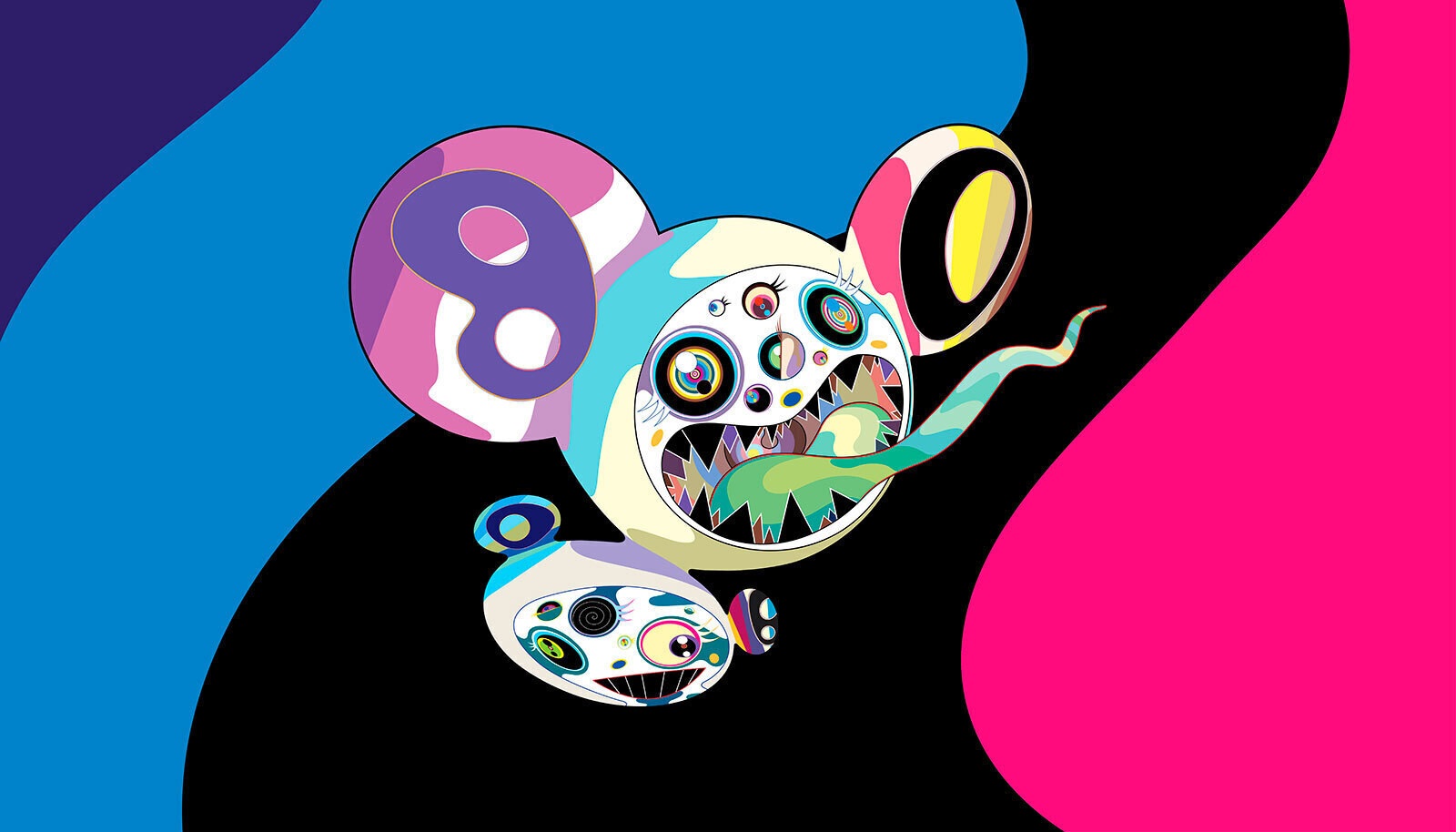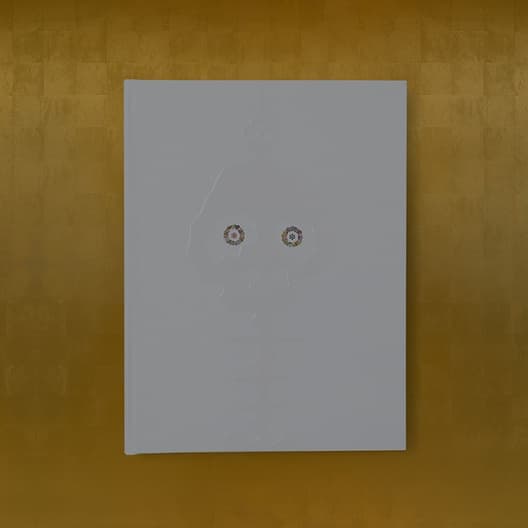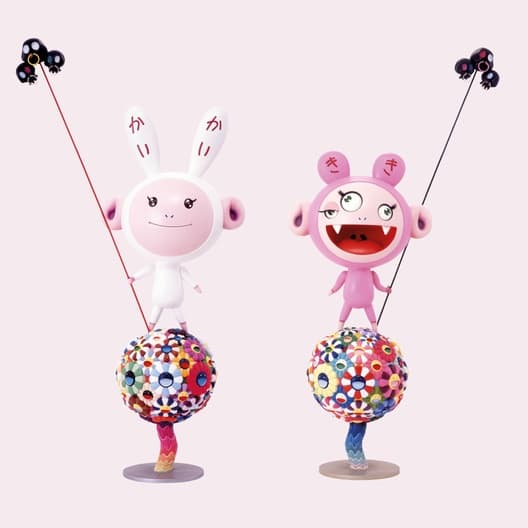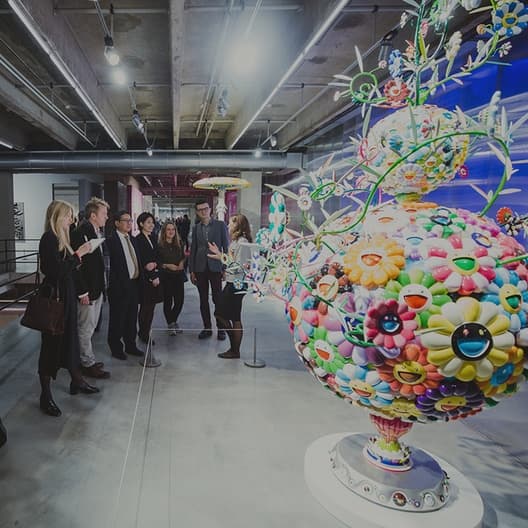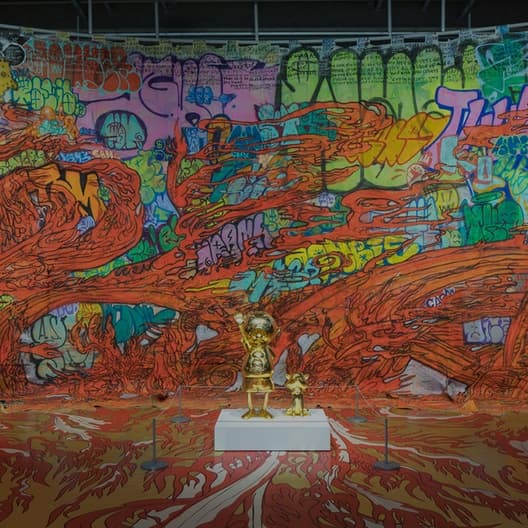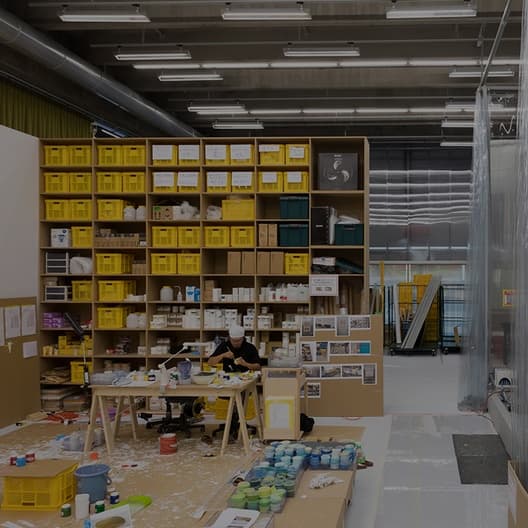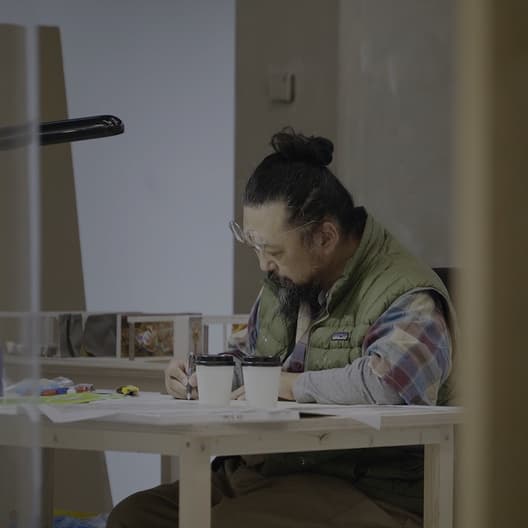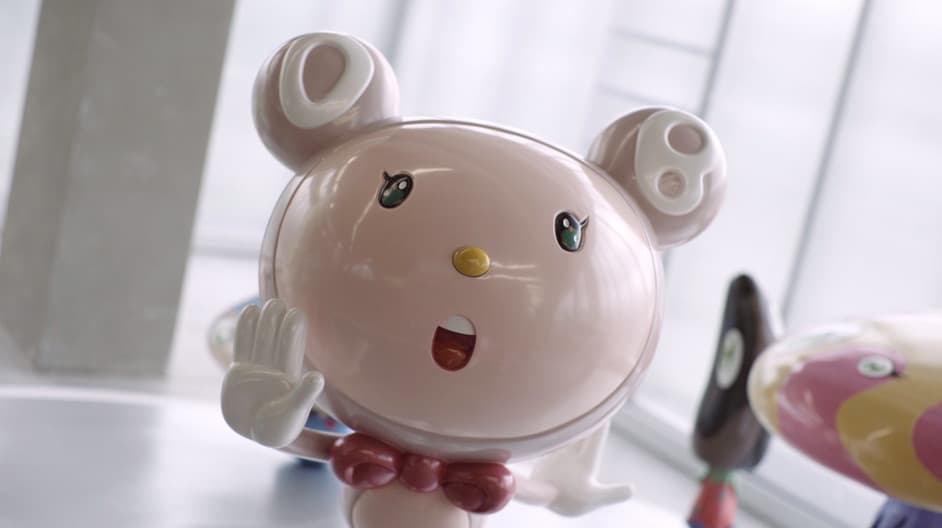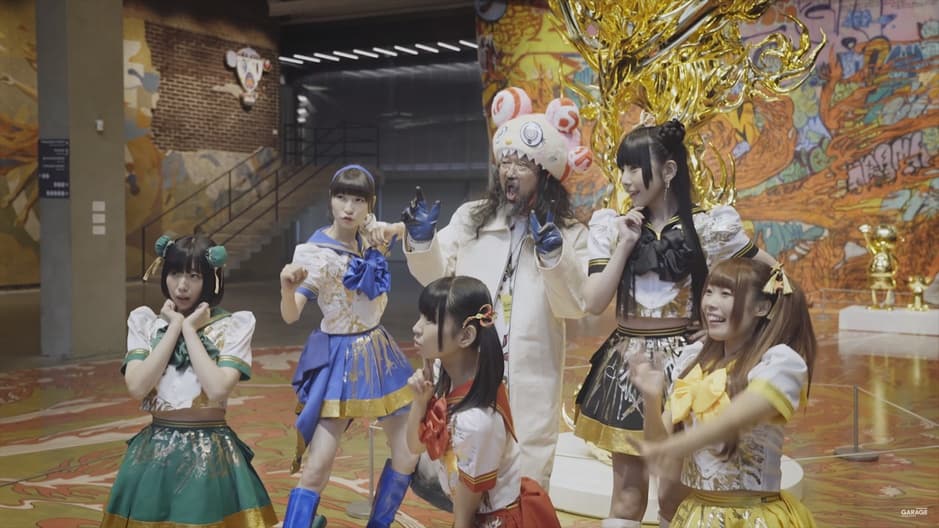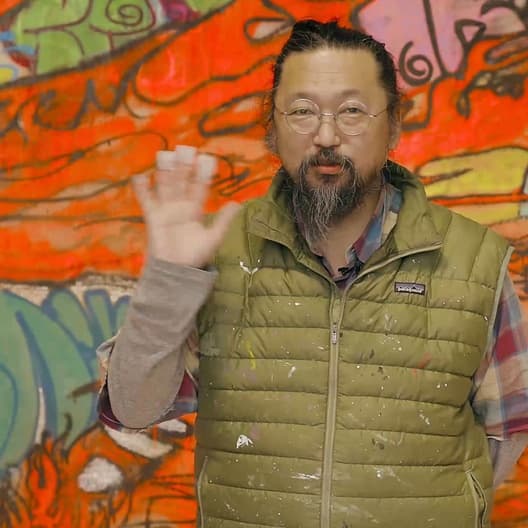The first section, Geijutsu (芸術, Learning and Technique), focuses on the genealogy of Murakami’s paintings and his ideas regarding the pictorial space and the artist’s craft. Having trained as a classical Nihonga painter, Murakami’s work is partly rooted in traditional Japanese painting, which is characterized by a certain flatness of image and what art historian Nobuo Tsuji (Lineage of Eccentrics: Matabei to Kuniyoshi, 2012) calls “eccentricity:” an expressionist aspect of the Japanese painterly tradition. This section also introduces a theme that will recur throughout the exhibition: the importance of daily routine and traditional labor, be it the making of engravings and paintings, ceramics, or sushi.
The second section, The Little Boy and the Fat Man (リトルボーイとファットマン), is a tribute to Murakami’s project Little Boy (2005), which explored the symbolism of August 1945 and the ways in which the Hiroshima and Nagasaki bombings transformed Japanese visual culture after the war. A disaster as a starting point for a new sensibility: from apocalyptic visions to a conscious escape from reality. This part of the exhibition focuses on visual rhymes between the works of Murakami, anime and manga, and historical documentation. The exhibition at Garage is the first in Europe to include one of Murakami’s earliest installations, Sea Breeze (1992), an extraordinary work that examines the events of August 1945 and is part of the collection of the 21st Century Museum of Contemporary Art, Kanazawa (Japan).
The third section, Kawaii (カワイイ), explores the intersections between Murakami’s work and the aesthetics of kawaii (cuteness), which is an integral part of contemporary Japanese culture. This part of the exhibition includes manga and anime featuring world-famous characters (Pokémon, Hello Kitty); various environments (such as a mirror zone with toys); a screening room showing Murakami’s 2013 feature film Jellyfish Eyes; and a space exhibiting the preparatory models for the film’s animated characters.
The fourth section, Sutajio (スタジオ), examines the structure of Murakami’s studio. The exhibition includes a recreation of part of his “factory,” in which the artist’s assistants worked during the installation of the exhibition. This section presents the history of Murakami’s studio and of the production of a number of works through the use of archive materials. It also includes a board with the names, photographs, and work schedule of the installation team. The “wet studio” provides a space for young Russian artists to learn Murakami’s painting techniques.
The “phantom chapter,” Asobi & Kazari (遊び & 飾り), is spread across the Museum’s non-exhibition spaces, demonstrating the playful aspect of Murakami’s work and his interest in decoration and patterns which are rooted in the Japanese artistic tradition. These parasite ornaments invading the Museum space create a transition from the exhibition to the world of Kaikai Kiki (the art production and art management corporation founded by Murakami in 1996), which occupy the Café and Bookshop and continue onto the facade of the building.
The exhibition at Garage includes more than eighty paintings, drawings (including prints), and films by Murakami from the collections of 21st Century Museum of Contemporary Art, Kanazawa; Mori Art Museum, Tokyo; and private collections. The exhibition also includes traditional Japanese engravings and paintings from the Pushkin State Museum of Fine Arts, Moscow, various artifacts from Murakami's studio, and photographs and examples of manga from Hiroshima Peace Memorial Museum.
Russian-language catalogue was published on the occasion of the exhibition, the first comprehensive publication on the artist in Russian.
Takashi Murakami's exhibition Under the Radiation Falls takes place as part of The Year of Japan in Russia.
The exhibition is curated by Katya Inozemtseva, Senior Curator of Garage.
Garage would like to thank JAL, St. Regis, and Panasonic for their help in the preparation of the project.
